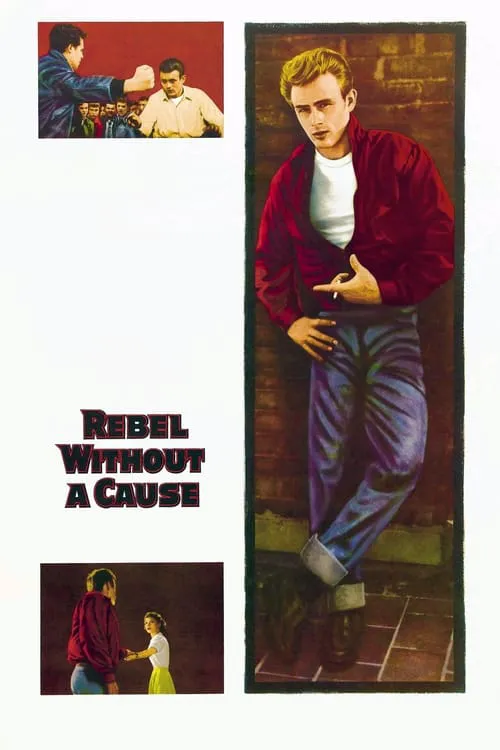Rebel Without a Cause

Plot
In the 1955 classic film "Rebel Without a Cause," James Dean brings to life the character of Jim Stark, a charismatic and rebellious teenager struggling to find his place in the world. Directed by Nicholas Ray, the movie is a poignant portrayal of adolescent angst, social pressure, and the complexities of young love. Shot on location in Los Angeles, the film's vivid portrayal of suburban life serves as the backdrop for Jim's tumultuous journey. The story begins with Jim's introduction to his new home in the suburban town of Los Angeles. Fresh from a recent move, Jim is eager to fit in and leave his past mistakes behind. However, his intentions are put to the test as he quickly finds himself embroiled in a complex web of relationships and rivalries. As the new kid in town, Jim faces the daunting task of navigating high school politics and establishing himself as a force to be reckoned with. One of the first individuals Jim meets is Plato (played by Sal Mineo), a sensitive and vulnerable young man who suffers from a series of eccentric behaviors. Plato's awkward interactions with his peers and strained relationships with his family make him an outcast, and as Jim forms a bond with him, he begins to understand the complexities of Plato's troubled mind. Their friendship serves as a catalyst for Jim's self-discovery, allowing him to confront his own vulnerabilities and insecurities. As Jim navigates his new surroundings, he finds himself drawn to Judy (played by Natalie Wood), a beautiful and fiery local girl who is involved with a notorious neighborhood bully named Buzz (played by Corey Allen). Buzz is a menacing figure who represents everything that Jim despises about conformity, social hierarchy, and violence. Their initial confrontation is a turning point in the film, marking the beginning of a series of violent and confrontational outbursts between the two. The tension between Jim and Buzz comes to a head when they agree to settle their differences in a high-stakes drag racing competition. The film's use of a neutral setting for the drag race serves as a metaphor for the empty, artificial world that surrounds Jim. His desire to compete against Buzz is a desperate attempt to prove himself, to assert his dominance, and to leave his own insecurities behind. However, it becomes increasingly clear that Jim's rebellion is rooted in a desire for validation and acceptance. Instead of embracing his individuality, Jim becomes trapped in a cycle of behavior that mirrors the very traits he despises in Buzz. As Jim's desperation grows, his actions become increasingly reckless, ultimately leading to a tragic confrontation with the outside world. The film's climax revolves around a series of heart-wrenching and disturbing events, including a violent outburst by Buzz at a school dance and a climactic drag racing competition. The tragic confrontation between Jim and Buzz is both a culmination of their long-simmering tensions and a poignant metaphor for the societal pressures and expectations that Jim has been trying to reject. One of the most striking aspects of "Rebel Without a Cause" is its nuanced portrayal of adolescent rebellion and social pressure. The film eschews simplistic solutions or easy answers, instead opting for a complex and ambiguous exploration of Jim's psyche. Through Jim's struggles, the film highlights the difficulties of growing up, the weight of social expectations, and the devastating consequences of unchecked violence. Nicholas Ray's direction is characterized by a distinctive visual style and a keen sense of narrative momentum. The film's use of atmospheric lighting, stark compositions, and dynamic camera movements all work together to create a visceral sense of tension and unease. James Dean's performance, meanwhile, is both captivating and heartbreaking, offering a deeply empathetic portrayal of Jim's inner turmoil. "Rebel Without a Cause" remains a timeless classic, offering a poignant commentary on the struggles of adolescence and the complexities of human nature. Its themes of rebellion, social pressure, and individuality continue to resonate with audiences today, making it a must-see for anyone interested in cinematic history or the complexities of the human experience.
Reviews
Recommendations




